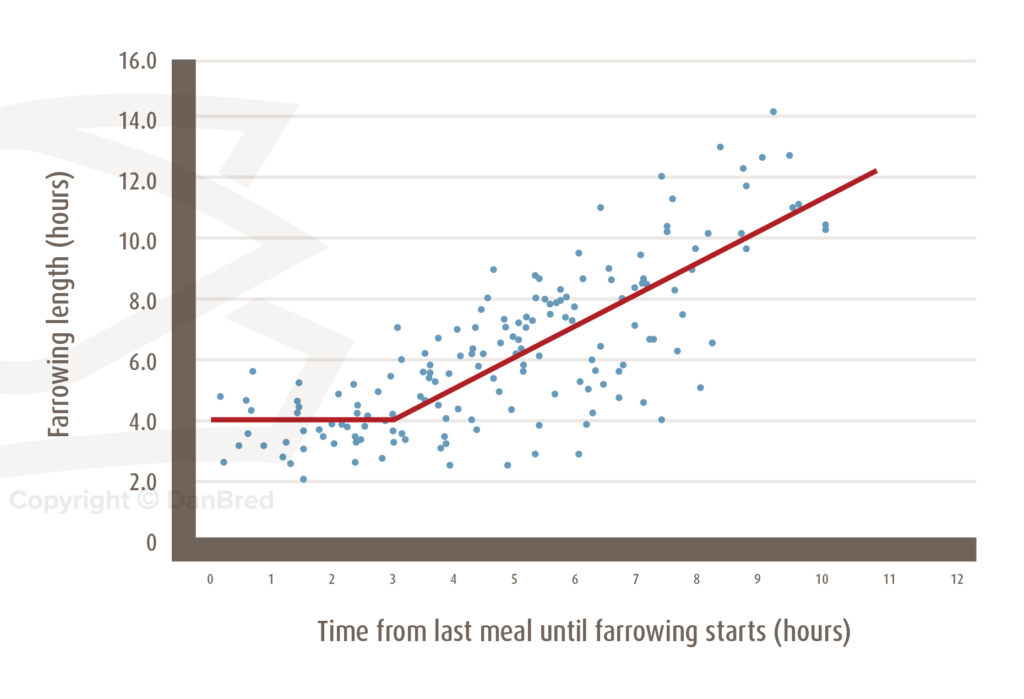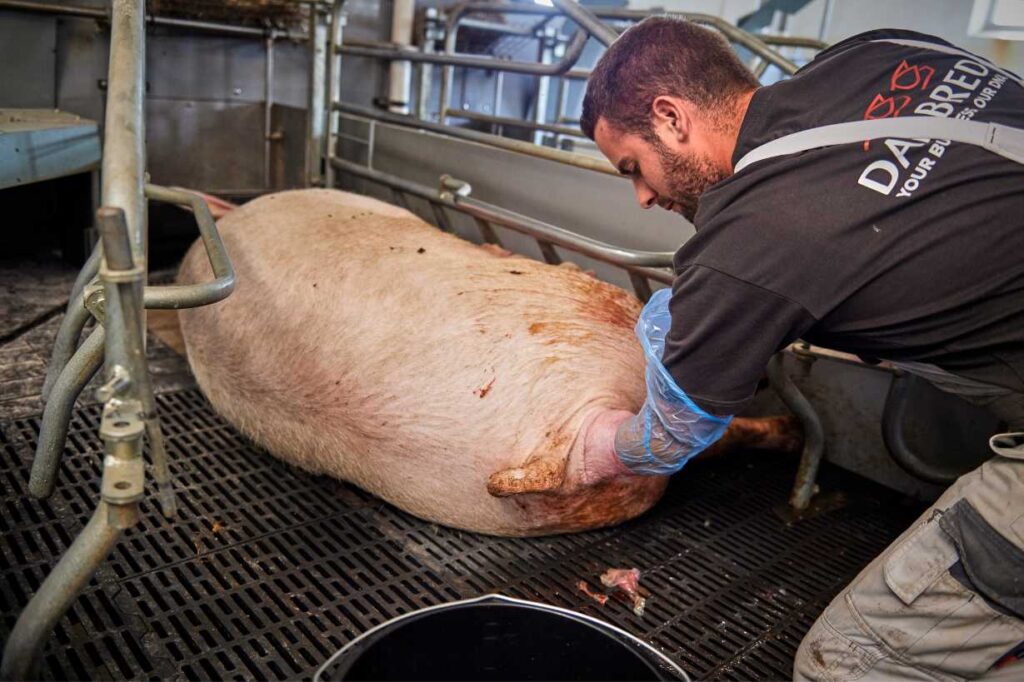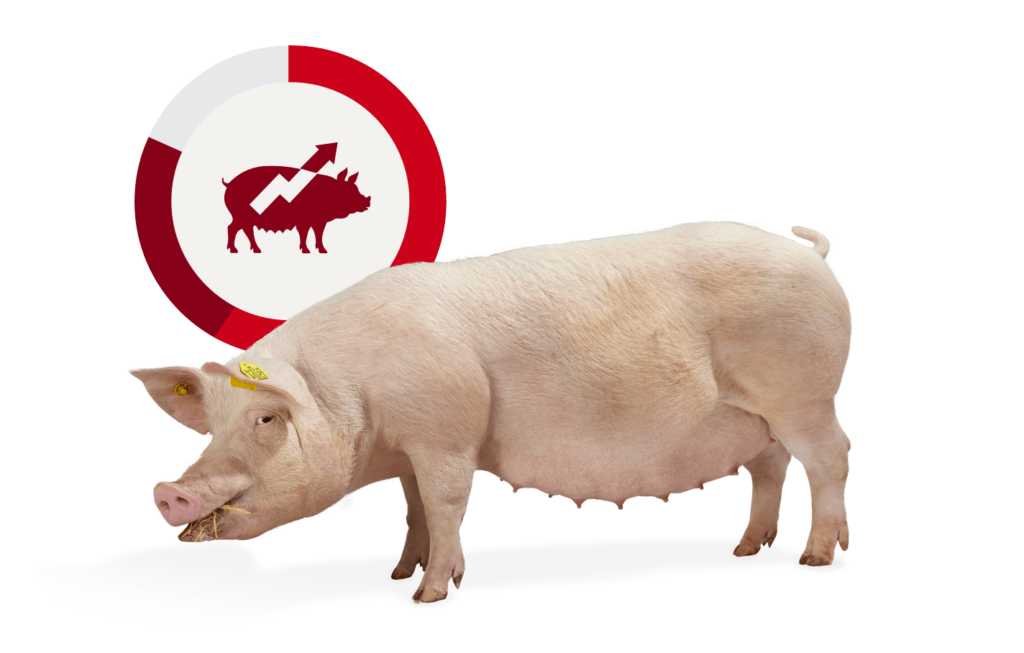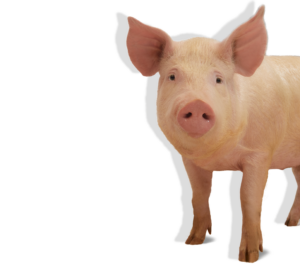Want to ensure a successful farrowing? Capturing the immense production potential of the DanBred sow relies on sound and proven management practices.

The successful management of large litters from hyper-prolific DanBred females is reliant on careful management of your piglets from day 1. Capturing the immense production potential of the DanBred sow depends on the implementation of sound and proven management practices to ultimately wean and market high-value pigs.
Studies have established that several factors affect the success rate within the farrowing unit. The average farrowing time is 4-7 hours – this time span is not affected by litter size, as big litters will be born with shorter intervals than small litters. The energy demand for producing a large litter is higher, therefore, feeding in late gestation is critical with hyper-prolific sows [1].
The duration of farrowing has been shown to be closely linked to the sow’s energy status. Low-energy status at the onset farrowing negatively affects the farrowing process [2]. Furthermore, the duration of the farrowing is negatively correlated with the risk of piglet losses, as the sow does not eat during farrowing. Feeding 3 to 4 times a day when the sows enter the farrowing unit will help to improve energy status and increase the success rate of farrowing [3]. Because of these factors, being able to recognise the onset of farrowing and acting accordingly is of great importance.

The observation and recording of sows that are farrowing is important – in particular, you should take note of the birth interval between each piglet, as this is a big indicator of how the process is going.
The birth interval between the first four piglets is 40 minutes (on average), and the first four piglets should be born within two hours. After the fourth piglet, the average birth interval decreases to around 20 minutes. The fifth piglet should then be born within the hour [1]. If this is not the case, intervention should be considered.
Monitored or attended farrowings has a tremendously positive effect on piglet survival. DanBred highly recommends that you observe the farrowing sows every 20–30 minutes. Farrowing assistance should begin if the birth interval exceeds 1 hour [4].
Red eyes and an increased breathing rate are possible signs of a sow needing assistance.
As performing farrowing assistance (i.e., a manual examination) is an invasive procedure for the sow, hygiene and technique is of great importance.
The period following farrowing assistance is when the sow should be left to rest but kept under observation – it might necessary to repeat assistance [1].
Prepare for farrowings when the sows has entered the farrowing unit. Be aware of hygiene in the pens and clean behind the sows regularly. Prepare the piglet area – including heat lamp/floor heating.
Signs that a sow needs farrowing assistance:
Initiate farrowing assistance by following this procedure:




[1] Danish Pig Research Centre (DPRC) (2017): Faringsforløb. SEGES Videncenter for Svineproduktion. Retrieved 16/02/19 https://svineproduktion.dk/viden/i-stalden/management/faring/faringsforloeb_ny
[2] Theil, P.K. (2017) Flere fodringer til soen giver færre dødfødte grise. Aarhus Universitet. Retrieved 21-02-2019. http://dca.au.dk/aktuelt/nyheder/vis/artikel/doedfoedte-grise-kan-reduceres-markant-via-fodring/
[3] Feyera, T.; Pedersen, T.F.; Krogh, U.; Foldager, L.; Theil, P.K. (2018): Impact of sow energy status during farrowing on farrowing kinetics, frequency of stillborn piglets, and farrowing assistance. J Anim Sci. 96(6):2320-2331
[4] Thorup, F.; Herskind, A.M.; Hansen, E.M.; Musse, S.L.; Nielsen, J.P.; Schmid, M.H. (2009): Faringsforløb hos frugtbare danske søer – SEGES Svineproduktion. Meddelelse nr. 839. Videncenter for Svineproduktion, Den rullende afprøvning.
We can help you transition to DanBred genetics, technical services, transport and more. Book a time with us, and we will call you when it suits you.

Do you think DanBred might be the right choice for you or someone you know? Click below to get in on the progress.

